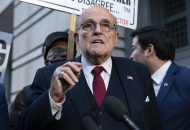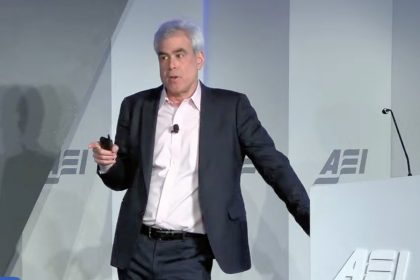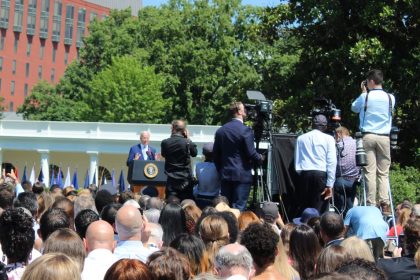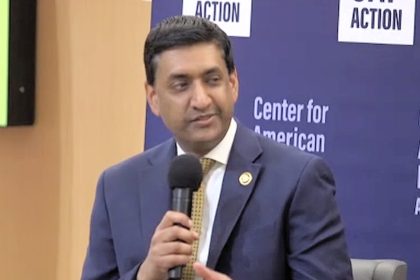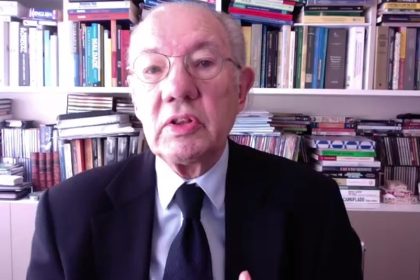DHS Chief Intelligence Officer Pushes for Increased Transparency
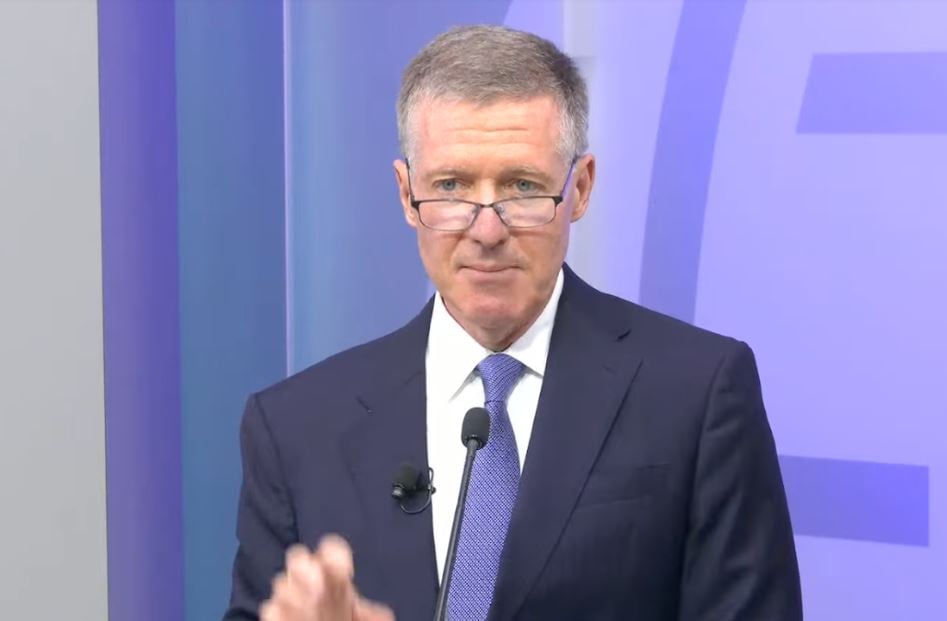
WASHINGTON — In the wake of controversies that surfaced in the summer of 2020 regarding the Department of Homeland Security’s Office of Intelligence and Analysis, Secretary Ken Wainstein is on somewhat of a transparency tour. This coincides with Congress facing critical decisions about I&A’s authorities, its future budget and its evolving mission.
“I&A is an organization in change, willing to change, and looking to change and improve,” Wainstein recently told the Atlantic Council.
“It is the least understood part of the intelligence community. Unlike other agencies, we don’t own a particular space in the intelligence enterprise. [And] if you look at our statutory mandate, it’s pretty vague. It’s not surprising that people don’t understand … how we work.”
One of the most recent additions to the U.S. intelligence community, the I&A is a bridge between the world of foreign intelligence, federal law enforcement and the front lines of state, local and tribal governments responsible for keeping all U.S. citizens safe and secure.
The Department of Homeland Security increasingly relies on I&A for analytical support across a wide spectrum of security and economic concerns. These include cybersecurity, nation-state threats posed by countries like China, Russia, Iran, domestic and international terrorism and challenges at the U.S.-Mexico border.
But as a domestically focused intelligence agency, I&A has limited authority. And it walks a fine line between using intelligence to safeguard the American people while respecting the principles of civil rights, civil liberties and privacy enshrined in the Constitution.
“[The events of] 9/11 were sort of the founding of DHS,” Wainstein explained. “I&A in particular was formed under the recognition that there were two gaps that helped to lead to 9/11 and helped those terrible attacks to take place.
“One was … a gap in terms of intelligence work being directed at the Homeland. Intelligence was always considered foreign intelligence prior to 9/11.
“The other was the gap … making sure that we were providing information that was needed by our state, local, territorial and tribal sector partners to harden themselves against threats. That was an information-sharing network that was not mature enough and we saw a lack of information being shared and a lack of dots being connected prior to 9/11.
“I&A was set up to fill those two gaps … but to do so not as a traditional intelligence agency, but as I like to say, a kinder, gentler intelligence agency,” Wainstein explained.
Over the years, I&A witnessed a profound transformation in the threat landscape. Today, Wainstein says the “threat fixture is much more diversified” and security challenges are more multifaceted than ever.
The threat of foreign terrorism remains active and lethal. Domestic violent extremism remains a persistent threat, fueled in part by the proliferation of social media platforms and online forums.
The activities of nation-state adversaries, particularly China, have become increasingly complex and serious, with infiltration attempts even within American law enforcement agencies.
Cybersecurity threats pose significant risks to critical infrastructure and transnational organized crime, exemplified by Mexican drug cartels, threatens national security while extending its reach into human smuggling and legitimate industries.
Meeting these threats, Wainstein said, will “require that we use all available tools, including the Foreign Intelligence Surveillance Act tool 702, up for reauthorization by Congress this year.”
FISA Section 702, set to expire on Dec. 31, 2023, unless Congress takes action to reauthorize, targets the collection of foreign intelligence information from non-U.S. individuals located abroad.
But I&A’s work within the United States, and with U.S. nationals, continues to receive pushback.
“Finding that dividing line between communications and rhetoric that is protected [under the First Amendment] and that which is designed to generate violence that is not protected is not as easy as it seems,” he said.
Still, Wainstein outlined I&A’s significant reorganization after “a number of programmatic reviews, including of field operations, the human intelligence collection program, [and] priorities that control where we devote our resources and our attention.”
More recent changes have included the addition of a new deputy undersecretary position focused on building partnerships, and the creation of a transparency and oversight program office, which reports directly to Wainstein.
“Privacy and civil liberties are … at a very important point … in history,” Wainstein said. “Right now we are getting a lot of questions about it — both from the Hill and from the public. The bottom line is … that the way we approach civil liberty and privacy is that it is a mission on par with our mission to protect the homeland. Those are dual missions.
“We ask for the legal authorities that we need to perform this mission and we ask for the resources to do this mission at scale given the current threat. And we also ask for one more thing — for the oversight and the safeguards to be put in place that would give Congress, and would give the American public, the confidence that we are using those authorities correctly and in alignment with the Constitution.”
You can reach us at [email protected] and follow us on Facebook and Twitter















